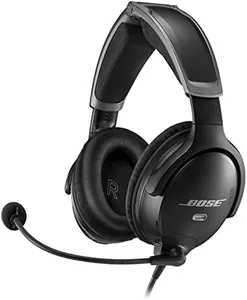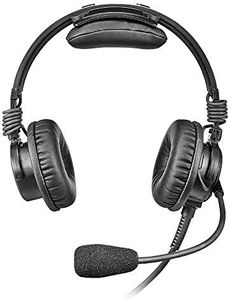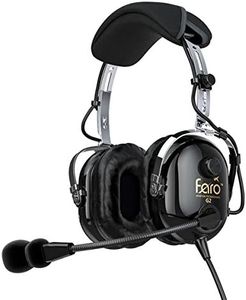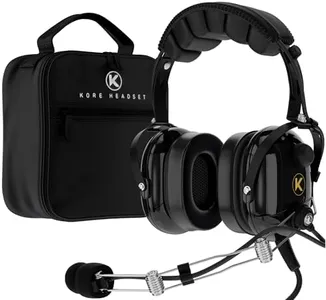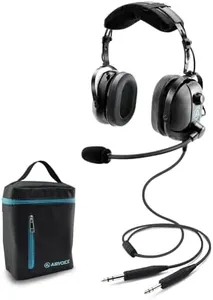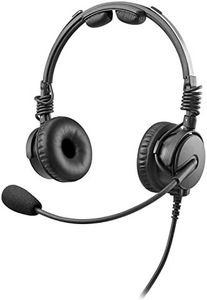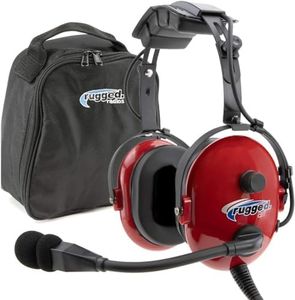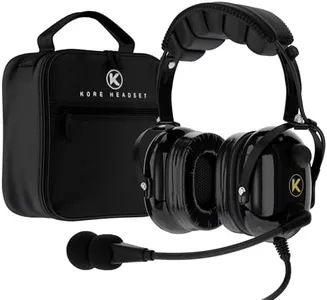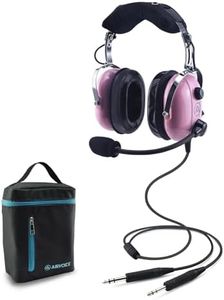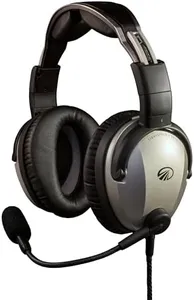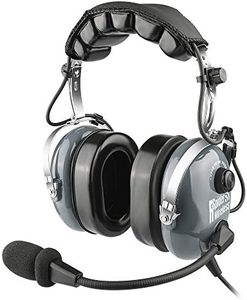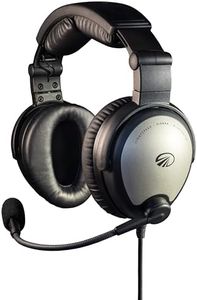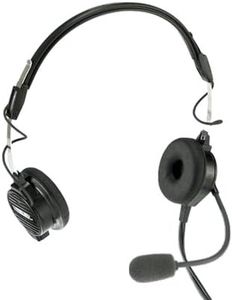We Use CookiesWe use cookies to enhance the security, performance,
functionality and for analytical and promotional activities. By continuing to browse this site you
are agreeing to our privacy policy
10 Best Aviation Headsets
From leading brands and best sellers available on the web.Buying Guide for the Best Aviation Headsets
When choosing an aviation headset, it's important to look for a model that matches the type of flying you do, your comfort preferences, and the noise levels you'll encounter. The right headset can reduce fatigue, protect your hearing, and help you communicate more clearly. Understanding which features and specifications matter most will make sure you get a headset that's comfortable and effective for your flying environment.Noise Reduction (Passive vs Active)Noise reduction refers to how well the headset blocks out aircraft and engine noise. There are two types: passive noise reduction (PNR) and active noise reduction (ANR). PNR relies on the design and padding to muffle sound, while ANR uses electronics to cancel out noise. PNR is generally effective in quieter cockpits and for shorter flights, while ANR headsets are better for noisy environments and longer flights. Choose the level of noise reduction based on the typical noise levels in your flying environment and how long you'll be wearing the headset.
Comfort and FitComfort and fit are critical because you'll be wearing the headset for extended periods. This involves the weight of the headset, the softness and shape of the ear seals, and how it rests on your head. Lighter headsets with plush, adjustable ear seals tend to be more comfortable, especially on longer flights. Try to evaluate which design feels best to you, and consider your sensitivity to pressure or heat. If you fly infrequently or for short trips, you may prioritize a lighter or more minimal design, while frequent or commercial pilots often look for maximum comfort over hours of use.
Microphone Quality and Side (Boom Placement)The quality of the microphone affects how clearly you can transmit your voice to air traffic control and other pilots. Look for noise-canceling microphones that cut out background noise. Some headsets allow the microphone boom to be worn on either the left or right side, while others are fixed. If you have personal preference or cockpit layout requirements, make sure to choose a headset with a flexible boom setup. Choose the microphone style and placement that feels natural and is compatible with your cockpit layout.
Connectivity (Plug Type and Compatibility)Aviation headsets come with different plug types, such as twin plugs, helicopter plugs, or 6-pin plugs, and can also feature Bluetooth for device connectivity. The plug type must match your aircraft’s audio system; otherwise, you’ll need an adapter. If you fly multiple aircraft, you might want a headset with adaptable connectors or model-specific cords. Bluetooth is useful if you want to connect a phone or other devices for auxiliary audio. Make your selection based on the types of aircraft you fly and whether you want to connect to personal devices.
Durability and Build QualityDurability describes how well the headset holds up to frequent use and handling. High-quality materials, sturdy cables, and well-built earcups help a headset last through the rigors of aviation use. If you’re a student or fly recreationally, standard build quality may be enough. For frequent flyers or pilots in tough environments, look for robust construction and replaceable parts. Consider how often and in what conditions you’ll use the headset.
WeightThe weight of a headset can affect comfort, especially on longer flights. Lighter headsets cause less pressure on the head and neck, resulting in less fatigue. However, extremely lightweight models may sometimes sacrifice durability or noise reduction. Decide if lower weight is a priority for you based on the duration of flights and your comfort expectations.
Adjustability and ControlsAdjustability refers to how much you can customize the headset to fit your head, including headband tension and microphone positioning. Convenient and easy-to-reach controls for volume and noise reduction settings can make a big difference in-flight. Pilots who often share their headset or fly with passengers may benefit from more adjustable designs. Choose a headset that feels easy to adjust and use while flying.
